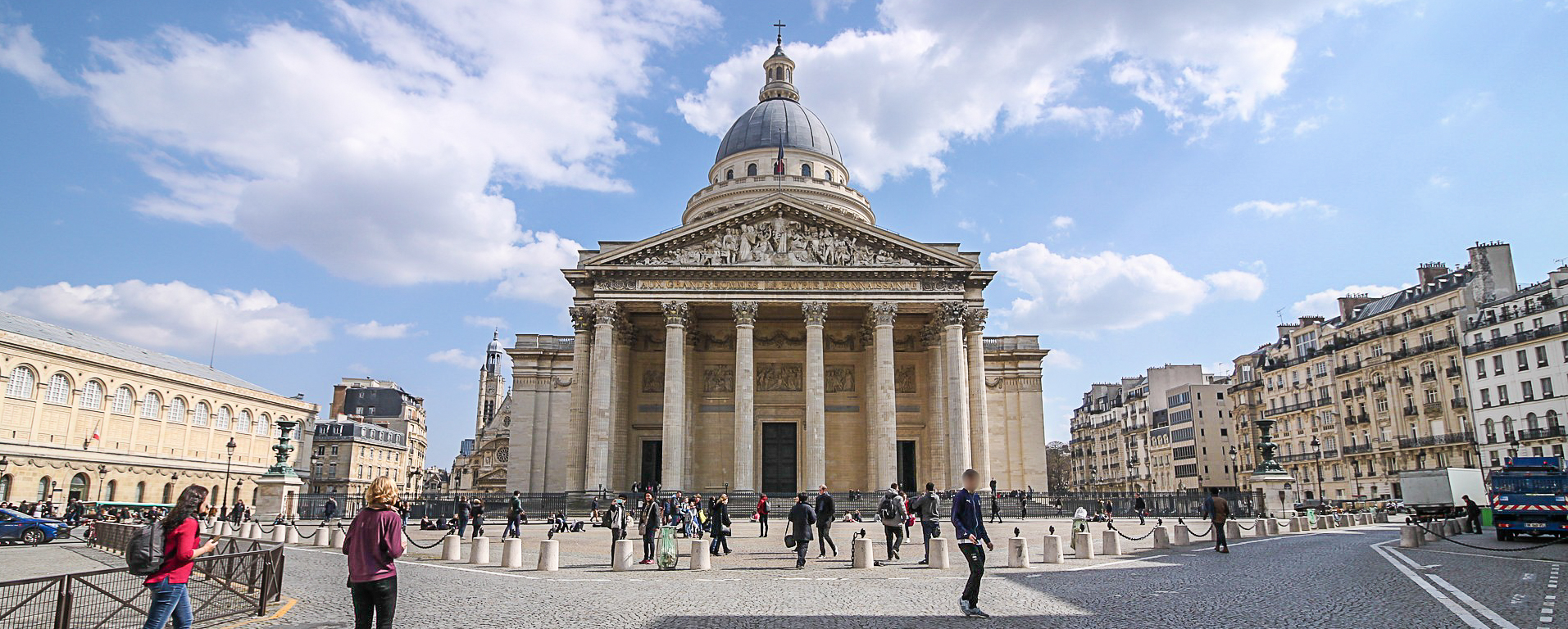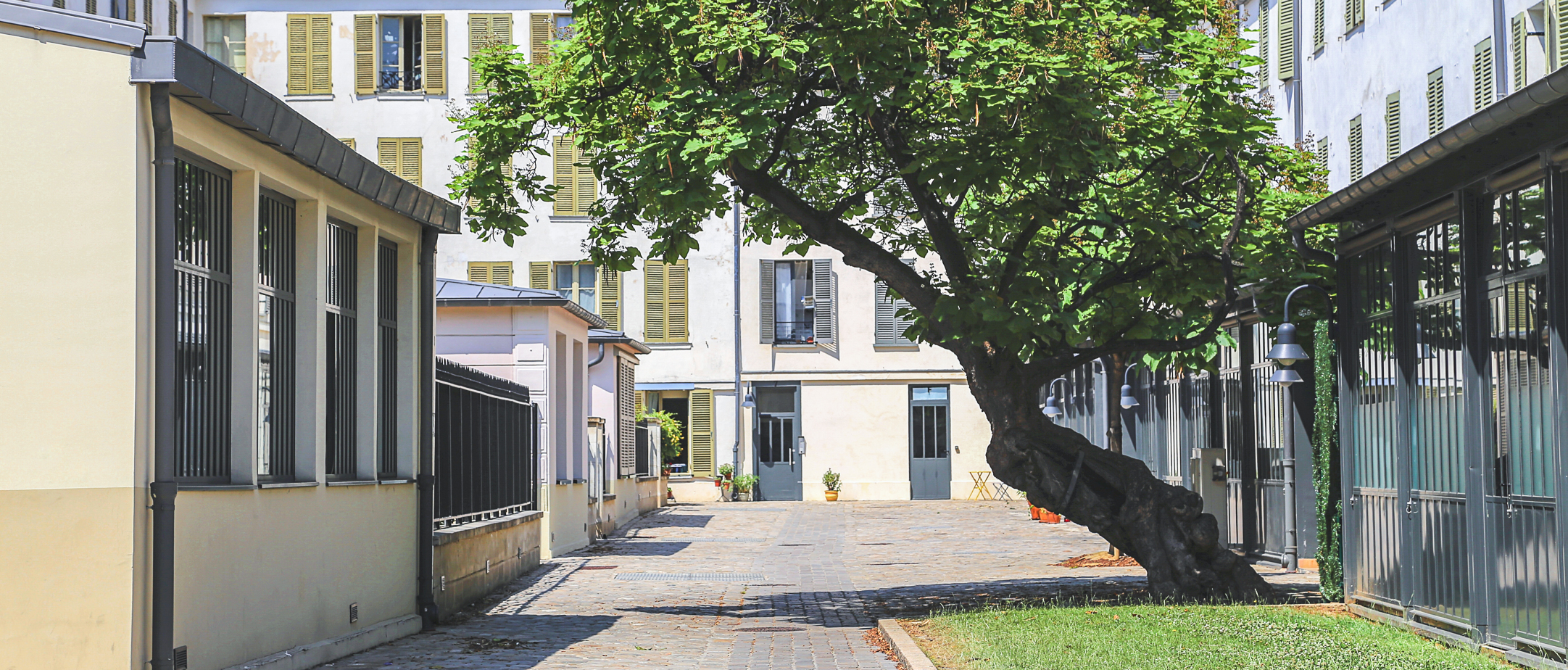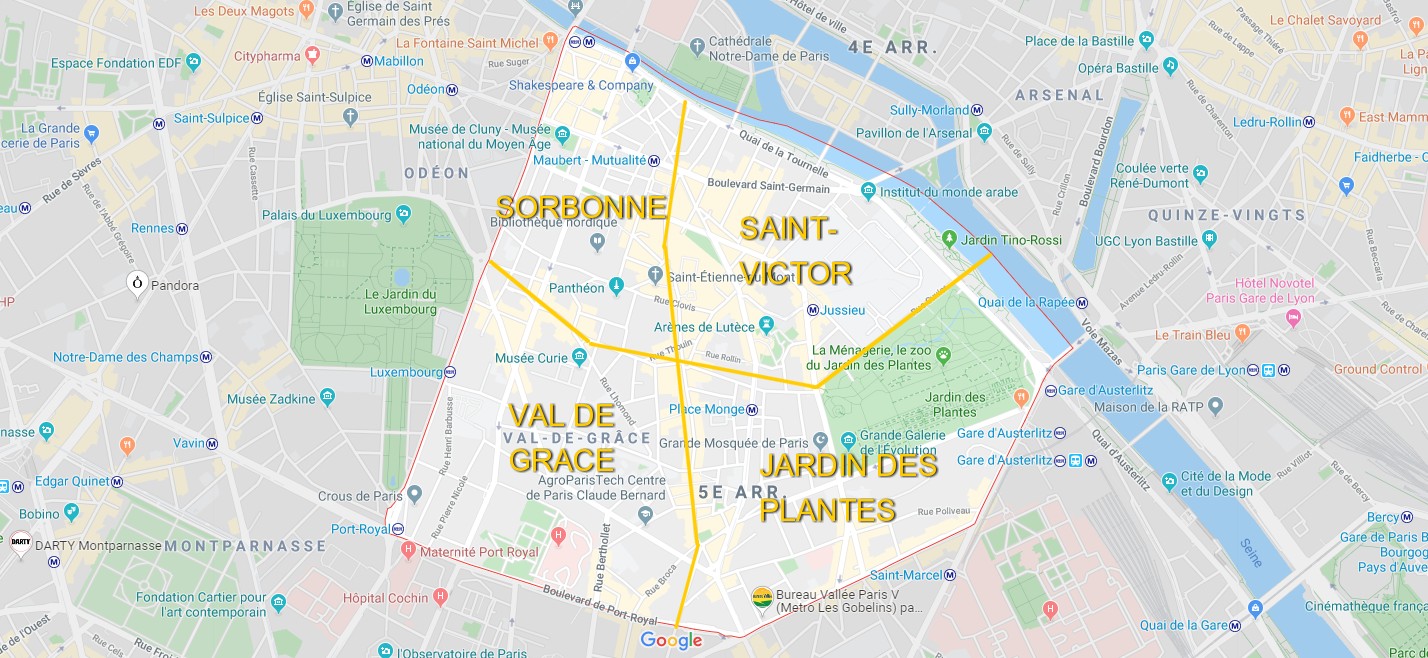While the Gauls lived on the island of the city before being subjugated by Rome, the Romans decided to settle on the left bank of the Seine around a north-south axis, now rue Saint-Jacques. The city center was located at the top of the Sainte-Geneviève mountain. In Gallo-Roman times, Lutetia was a modest city. The forum was built in the 1st century on the site where rue Soufflot now stands. There were also thermal baths, an amphitheater, and the Lutetian Arena. The city extended as far as the rue du Val-de-Grâce, on the edge of what is now the 6th arrondissement. Later, the population retreated to the island of the city, which was protected by a wall.
The left bank was totally destroyed by the Normans in 885. It began to be rebuilt from the 11th century onwards, and Philippe Auguste’s city walls, completed in the 13th century, reintegrated the north-western part of the current 5th arrondissement into Paris. It was not until the 18th century that the city expanded further south. The schools of the University of Paris were located in this area, where Latin was spoken, which explains the origin of the name Latin quarter. From the 18th century onwards, the arrondissement as a whole was integrated into the Fermiers Généraux enclosure, becoming livelier and more peaceful.

 Choose an arrondissement
Choose an arrondissement










